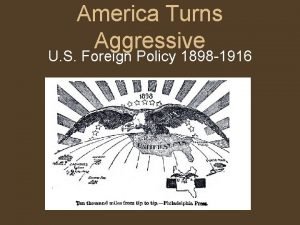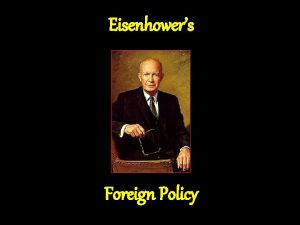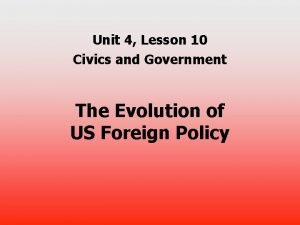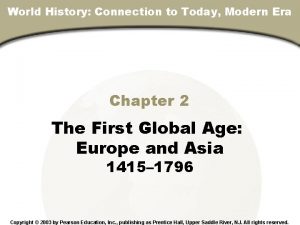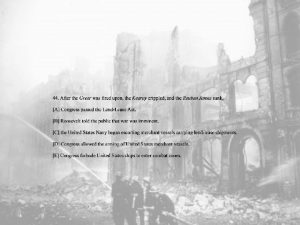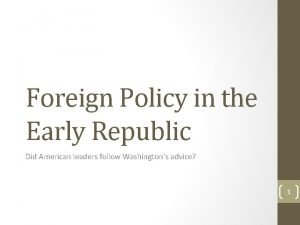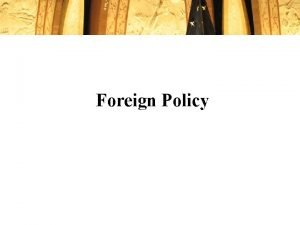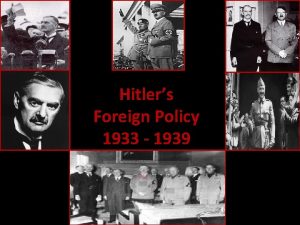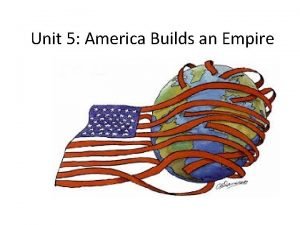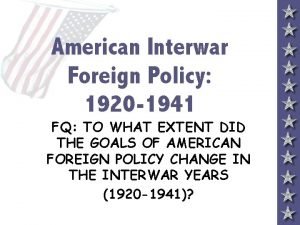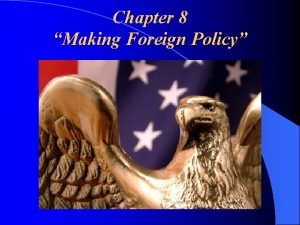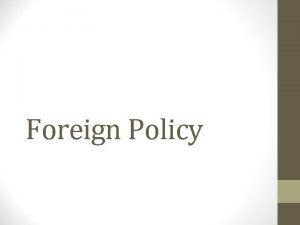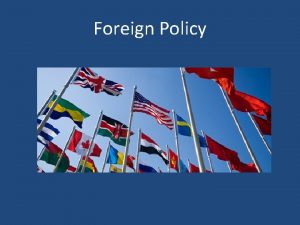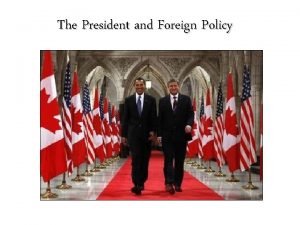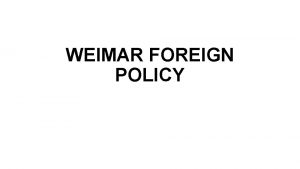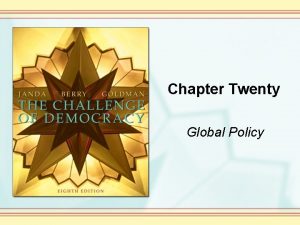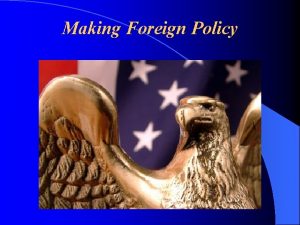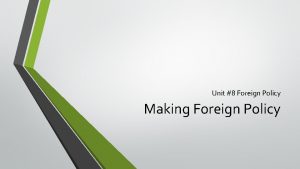Making foreign Policy President Foreign Policy Foreign Policy















- Slides: 15

Making foreign Policy

President & Foreign Policy • Foreign Policy- A plan for dealing with other nations. • National Security- The goal of foreign policy or to keep the country safe from harm p 6

President & Foreign Policy • Another goal of foreign policy is international trade. • Trade creates markets for American products.

President & Foreign Policy • Another goal is to promote world peace. • War disrupts trade • Endangers national security

President & Foreign Policy • Another goal is to promote democracy throughout the world. • Democracy promotes peace and human rights. • It helps secure national security

President & Foreign Policy • The state department and the secretary of State work with the President in handling foreign policy. • In addition the CIA, and defense department and National Security Agency (NSA) give the president valuable information

President & Foreign Policy • Constitution divides the power to conduct foreign and military affairs between the Congress and the president. • President- Chief diplomat • Congress- power to declare war, prohibit certain military action, or withhold funding for the military.

Tools of Foreign Policy 1. 2. 3. 4. 5. • Tools include: Making treaties choosing ambassadors Applying foreign aid International trade Use of the Military

Treaties & executive agreements • Treaties- Formal agreements among 2 or more Countries Treaties are based on: 1. Defense (NATO) 2. Trade (NAFTA) 3. Passage (Hormuze)

Treaties & executive agreements • Treaties must be ratified by the Senate with a 2/3 vote. • President can by pass the senate by making an executive agreement. An understanding between the President and another foreign leader.

Appointing Ambassadors • Ambassador- An official representative of the U. S. 1. Must be approved by the Senate 2. Sent only to countries with diplomatic relations. (Iran, Syria)

Foreign Aid • Is the money, food, military assistance or supplies given to help other countries. • Marshal Plan- helped rebuild Europe after WWII

International trade • The exchange of goods and services among countries • Trade can be used as a defense tool by imposing trade sanctions- implementing trade barriers with another country in order to punish a country

International trade • Embargo- an agreement among several nations that prohibits them from trading with a target country. • Congress can also impose tariffs on imported goods

Military Force • President may use the military to carry out foreign policy decisions. • This must be done with great care and attention to detail to avoid putting the country in a position of war.
 President taft’s foreign policy emphasized
President taft’s foreign policy emphasized President vice president treasurer secretary
President vice president treasurer secretary Here you are too foreign for home
Here you are too foreign for home War making and state making as organized crime summary
War making and state making as organized crime summary Making inferences
Making inferences Truman foreign policy vs eisenhower
Truman foreign policy vs eisenhower Unit 4 lesson 10 american foreign policy
Unit 4 lesson 10 american foreign policy Chapter 14 section 1 the search for spices
Chapter 14 section 1 the search for spices What was thomas jefferson foreign policy
What was thomas jefferson foreign policy Foreign policy shift
Foreign policy shift Foreign policy in the early republic
Foreign policy in the early republic Definition of foreign policy by scholars
Definition of foreign policy by scholars Hitlers foreign policy
Hitlers foreign policy Foreign policy
Foreign policy Interwar america
Interwar america Manchuria apush
Manchuria apush
